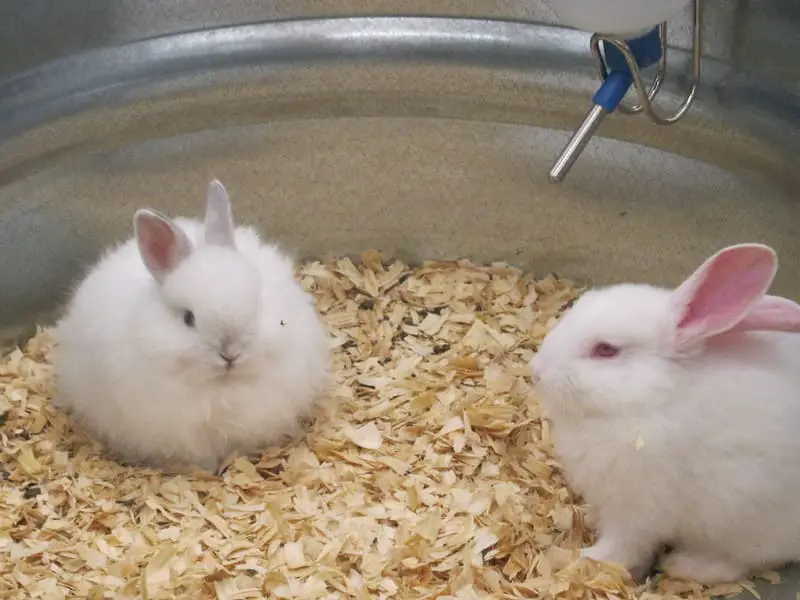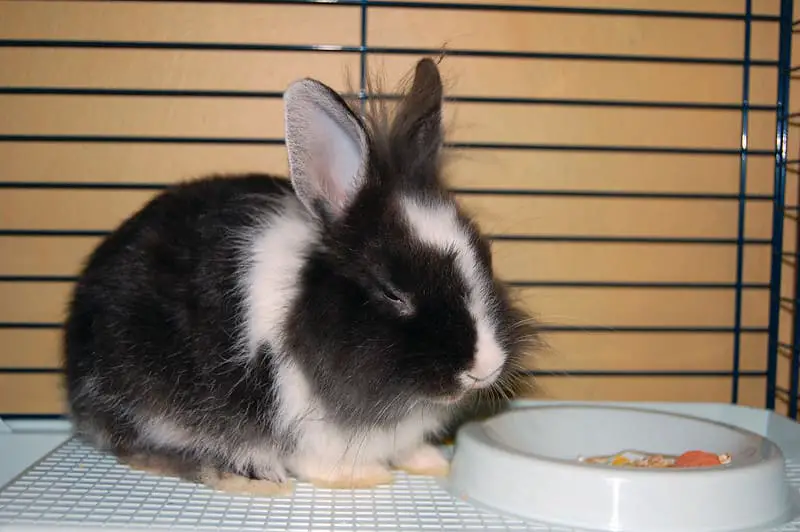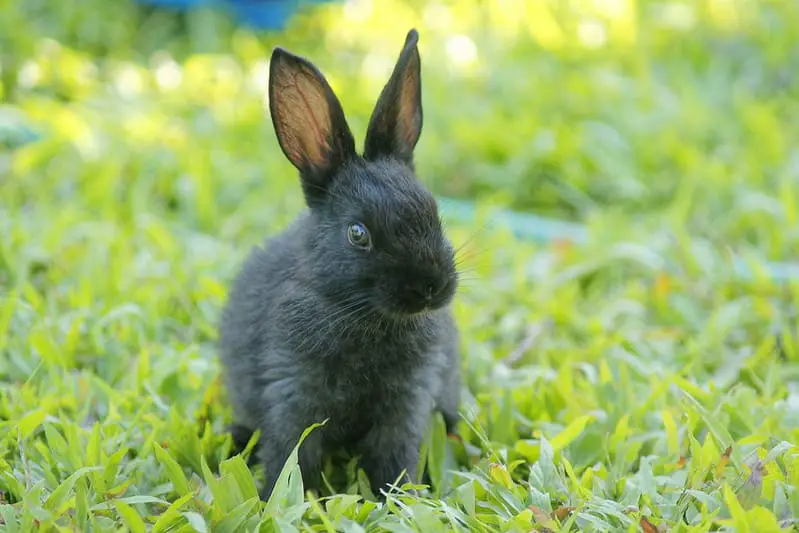Bringing a new rabbit into your home is an exciting and rewarding experience. These furry, gentle creatures make wonderful companions, but like any pet, they come with their unique set of challenges. One of the most common concerns for new rabbit owners is how to properly litterbox train their furry friend. Litterbox training your rabbit is not only a matter of convenience; it’s also crucial for maintaining a clean and healthy living environment for both you and your pet. In this comprehensive guide, we will walk you through the steps of litterbox training your new rabbit, offering tips and tricks to ensure success.

Understanding the Importance of Litterbox Training
Litterbox training your rabbit is a fundamental aspect of their care. Unlike some other pets, rabbits are naturally inclined to use a designated bathroom area. In the wild, rabbits choose a particular spot for their droppings and use this as a way to establish territory and communicate with other rabbits. By harnessing this natural behavior, you can make your home more rabbit-friendly and easier to maintain.
Litterbox training is not only a matter of convenience; it also helps protect your rabbit’s health. Rabbit droppings can carry harmful bacteria, and urine can cause staining and odor problems if not managed properly. Litterbox training reduces the risk of your rabbit coming into contact with its waste, which can help prevent health issues.
Preparing for Litterbox Training
Before you begin the process of litterbox training your rabbit, there are several steps you should take to prepare your home and set your rabbit up for success:
Choose the Right Litterbox
Selecting the appropriate litterbox is crucial. You should opt for a box that is large enough for your rabbit to comfortably hop into and turn around. Plastic storage bins with low sides are a popular choice, as they are affordable and readily available. Make sure the box is easy for your rabbit to access.
Select the Right Litter
Choose a litter that is safe and comfortable for your rabbit. Avoid clay-based or clumping litters, as they can be harmful if ingested. Instead, opt for rabbit-safe litters made from paper, wood pellets, or other natural materials. Some popular options include Carefresh, Yesterday’s News, or Feline Pine.
Choose the Right Location
Select a suitable location for the litterbox. Rabbits tend to be creatures of habit, so it’s important to pick a spot where your rabbit naturally gravitates to for bathroom purposes. This may be a corner they’ve already chosen or a spot where you’ve noticed them going frequently.
Bunny-Proof Your Home
Before giving your rabbit free rein of your home, you should rabbit-proof the space. This involves ensuring that there are no exposed wires, toxic plants, or other hazards that your rabbit might chew on or ingest. Additionally, make sure there are no hiding spots behind furniture or appliances where your rabbit could deposit droppings.
Limit the Initial Space
During the initial stages of litterbox training, it’s a good idea to limit your rabbit’s space. You can use a puppy playpen or a smaller enclosed area to help your rabbit become familiar with the litterbox. Gradually, you can expand their living space as they become more reliable with their litterbox habits.

Training Your Rabbit to Use the Litterbox
Once you’ve prepared your home and gathered the necessary supplies, it’s time to begin the litterbox training process. Here are the steps to help you teach your rabbit to use the litterbox:
Observe Your Rabbit’s Behavior
Start by closely observing your rabbit’s behavior, especially in the first few days after bringing them home. Notice where they tend to urinate and defecate. Rabbits are creatures of habit, and they will often return to the same spot to do their business.
Place Droppings in the Litterbox
If you notice your rabbit consistently using a particular spot, place some of their droppings in the litterbox. This can help them recognize the litterbox as the appropriate place to go.
Introduce the Litterbox
Place the litterbox in the location your rabbit has shown a preference for. If you’re using a large enclosure, put the litterbox at one end. Ensure that it’s easily accessible for your rabbit.
Use Positive Reinforcement
Whenever your rabbit uses the litterbox, offer positive reinforcement in the form of praise or a small treat. Rabbits respond well to positive reinforcement, and this will encourage them to continue using the litterbox.
Be Patient
Litterbox training can take time, and your rabbit may have occasional accidents. It’s important to be patient and consistent. Don’t scold your rabbit for accidents, as this can create a negative association with the litterbox. Instead, focus on encouraging and rewarding good behavior.
Clean Accidents Promptly
If your rabbit does have accidents outside the litterbox, it’s essential to clean up the mess promptly. Use a pet-safe enzymatic cleaner to remove any odors, as rabbits may be more likely to return to a spot that smells like a previous accident.
Gradually Expand the Space
As your rabbit becomes more consistent with using the litterbox, you can gradually expand their living space. Monitor their behavior and be prepared to adjust the placement of the litterbox if necessary.
Consider Multiple Litterboxes
If your home is large or your rabbit has access to multiple areas, you might want to consider placing more than one litterbox in different locations. This can make it easier for your rabbit to find a litterbox when they need it.
Common Challenges and Solutions
While most rabbits can be successfully litterbox trained, there can be challenges along the way. Here are some common issues you might encounter and solutions to address them:
Spraying
Some unneutered male rabbits may exhibit territorial spraying behavior. Neutering can often alleviate this issue. If your rabbit is already neutered and still sprays, consult with a veterinarian for advice on managing this behavior.
Digging in the Litterbox
If your rabbit digs excessively in the litterbox, consider providing a deeper layer of litter. This can help satisfy their natural digging instincts. However, if your rabbit starts to dig out the litter and scatter it around the cage, you may need to use a more enclosed litterbox or modify the existing one to prevent this behavior.
Accidents Outside the Litterbox
If your rabbit continues to have accidents outside the litterbox, review the following potential causes:
- Medical Issues: Sometimes, health problems can lead to changes in litterbox habits. If you notice a sudden and significant change in your rabbit’s bathroom behavior, consult a veterinarian to rule out any underlying medical issues.
- Stress: Changes in the environment, such as a new pet, loud noises, or moving the litterbox, can stress your rabbit and lead to accidents. Try to keep your rabbit’s environment as consistent as possible.
- Cleaning: Ensure that the litterbox is kept clean, as rabbits may avoid a dirty box. Change the litter regularly, and clean the box to remove any lingering odors.
- Litter Preference: Your rabbit may have a preference for a specific type of litter. Experiment with different types to see if your rabbit prefers one over the other.
- Spaying/Neutering: If your rabbit is not spayed or neutered, consider this procedure, as it can improve litterbox habits and reduce territorial behaviors.
Reinforce Positive Behavior
To address any issues, it’s important to continue using positive reinforcement. Praise and reward your rabbit when they use the litterbox correctly, and avoid punishment for accidents. Rabbits are sensitive creatures, and negative reinforcement can be counterproductive.

Maintenance and Cleaning
Maintaining a clean and odor-free litterbox is essential for your rabbit’s health and well-being. Here are some tips for keeping the litterbox in top condition:
Regular Cleaning
Scoop out soiled litter from the box daily to keep it clean. Replace the litter completely every few days or as needed. The frequency of litter changes depends on your rabbit’s habits and the type of litter you use.
Wash the Litterbox
Periodically, wash the litterbox with mild soap and water to remove any built-up residues and odors. Make sure it’s thoroughly dry before adding fresh litter.
Provide Hay
Place a hay rack or hay dispenser near the litterbox. Rabbits often like to eat hay while they use the litterbox, which can encourage them to spend more time in the box.
Use a Grate or Grid
To help prevent your rabbit from sitting in their own droppings, you can place a small grate or grid over a portion of the litterbox. This allows droppings to fall through and helps keep your rabbit cleaner.
Spot Clean Accidents
If your rabbit has an accident outside the litterbox, clean it up promptly with an enzymatic cleaner. This not only removes odors but also helps prevent repeat accidents in the same spot.
Transitioning to Free Roam
Once your rabbit consistently uses the litterbox in a limited space, you can gradually expand their living area. Here’s how to transition to free roam:
Gradual Expansion
Slowly introduce your rabbit to new areas of your home, one section at a time. Observe their behavior and be ready to place additional litterboxes in new locations as needed.
Supervision
Initially, closely supervise your rabbit when giving them access to a larger area. This way, you can quickly address any accidents and guide them back to the litterbox.
Make Adjustments
If your rabbit has accidents in the expanded space, consider whether the litterbox is still easily accessible to them. Adjust its location as necessary to facilitate successful litterbox use.
Bunny-Proofing
Ensure that the newly expanded space is properly bunny-proofed to prevent any potential hazards.
Additional Tips and Considerations
Neutering/Spaying
Spaying or neutering your rabbit can have a significant impact on their litterbox habits. It can reduce territorial behaviors and make litterbox training more effective.
Be Patient and Consistent
Litterbox training can take time, and it’s important to be patient and consistent. Avoid scolding your rabbit for accidents, as this can create a negative association with the litterbox. Instead, focus on positive reinforcement for good behavior.
Multiple Litterboxes
Consider placing more than one litterbox in different areas, especially if your home is large or your rabbit has access to multiple rooms. This can make it easier for them to find a litterbox when they need it.
Consult a Veterinarian
If you’re experiencing persistent litterbox issues despite your best efforts, consult with a veterinarian who specializes in rabbit care. They can rule out any medical issues that may be contributing to the problem and offer further guidance.
Conclusion
Litterbox training your new rabbit may take time and patience, but with the right approach and consistent positive reinforcement, most rabbits can learn to use the litterbox reliably. This not only makes your life as a rabbit owner more convenient but also contributes to a healthier and happier environment for your furry friend. Remember that every rabbit is unique, so adapt your training methods to suit your pet’s specific needs and preferences. In the end, the bond you build with your litterbox-trained rabbit will be well worth the effort invested in the training process.
